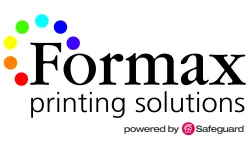What Is Best Page Count for Saddle-Stitch Binding?
What is the best page count for Saddle Stitch?
A page count of 60 pages or less is generally recommended for saddle stitch binding because it allows the booklet to maintain these qualities. Booklets with a higher page count may become too thick, making it difficult for the booklet to lie flat or stack neatly.
Additionally, a higher page count can put strain on the binding, potentially causing pages to come loose or the booklet to fall apart. By keeping the page count to 60 pages or less, you can ensure that your saddle-stitched booklet looks professional and functions effectively.
Booklets are commonly produced using the Saddle-Stitch binding method, which is cost-effective and widely used. This method involves taking printed sheets, folding them, and nesting them within one another. The nested sheets are then stapled along the fold line using two wire staples. These staples pass through the folded crease from the outside and are clinched between the centermost pages. Saddle-Stitch binding provides a secure and efficient way to bind booklets, making it a popular choice for various publications such as brochures, pamphlets, catalogs, and magazines.
What is the maximum number of pages for Saddle Stitched?
The theoretical maximum number of pages that can be saddle-stitched in a booklet is around 120 pages. This is because binding staples can only secure up to about 30 sheets of paper, which translates to 120 pages in total. However, a booklet with such a high page count may not lay flat due to the increased bulk and rigidity near the spine.
This can cause a gap to form between the pages, especially in smaller books, making it difficult for them to stay closed. Despite the theoretical limit, practical considerations such as page thickness and book size should also be taken into account when determining the optimal page count for a saddle-stitched booklet.
Booklets are commonly produced using the Saddle-Stitch binding method, which is cost-effective and widely used. This method involves taking printed sheets, folding them, and nesting them within one another. The nested sheets are then stapled along the fold line using two wire staples. These staples pass through the folded crease from the outside and are clinched between the centermost pages. Saddle-Stitch binding provides a secure and efficient way to bind booklets, making it a popular choice for various publications such as brochures, pamphlets, catalogs, and magazines.
What is the minimum number of pages for Saddle Stitched?
Regarding saddle stitched books, the minimum page count is typically two folded sheets, equating to an 8-page self-cover book or a 4-page plus cover book. This means that for most booklet projects, the ideal page count for saddle stitch binding falls between a maximum of 60 pages and a minimum of 4 or 8 pages, depending on whether it is a self-cover or plus-cover booklet.
This information is crucial when determining the appropriate page count for a saddle-stitched book, ensuring the final product is well-constructed and visually appealing.
Pages Must Be in Multiples of Four

Since each folded sheet joined within the finished booklet will form four pages of the booklet, it is not possible to create a 7-page, 10-page, or 25-page saddle-stitched booklet. The only feasible page counts for saddle-stitched booklets are 4 pages, 8 pages, 12 pages, 16 pages, 20 pages, 24 pages, 28 pages, 32 pages and so on. Even if a page within the booklet is blank, it still counts as a page. When writing or planning your book it is important to keep this 4 page count in mind.
If you have any questions about the saddle-stitch binding method, give Formax Printing a call at 866-367-6221. Or, if you have an upcoming project and would like a quote, submit our easy quote request form. As always, we look forward to assisting you!
Take care! Rick
